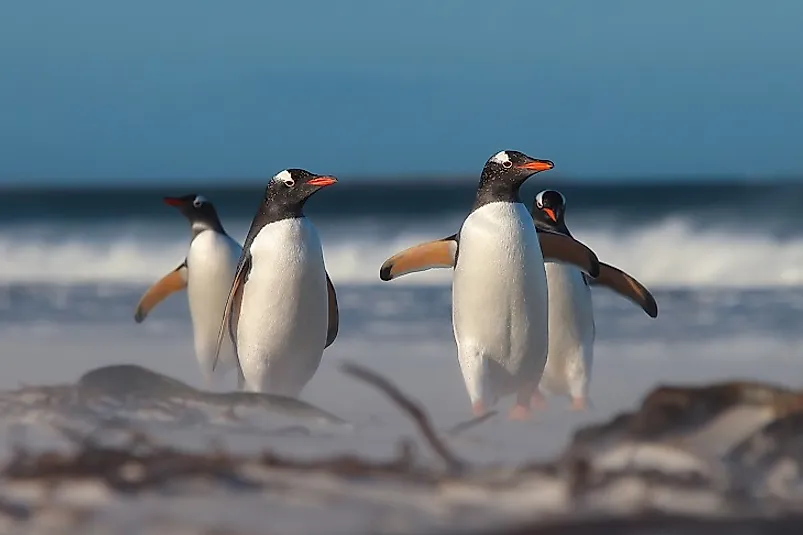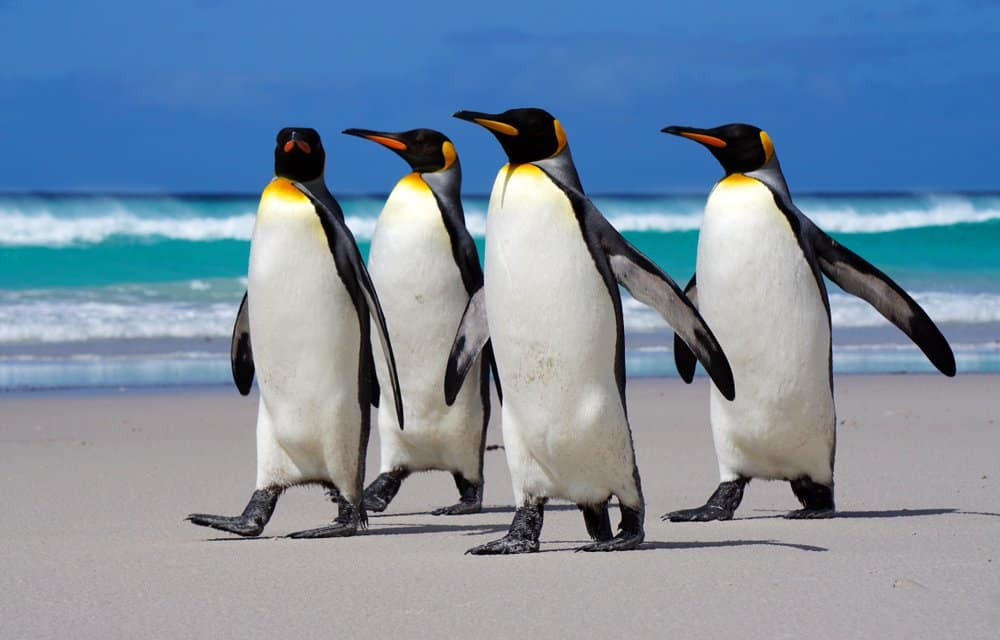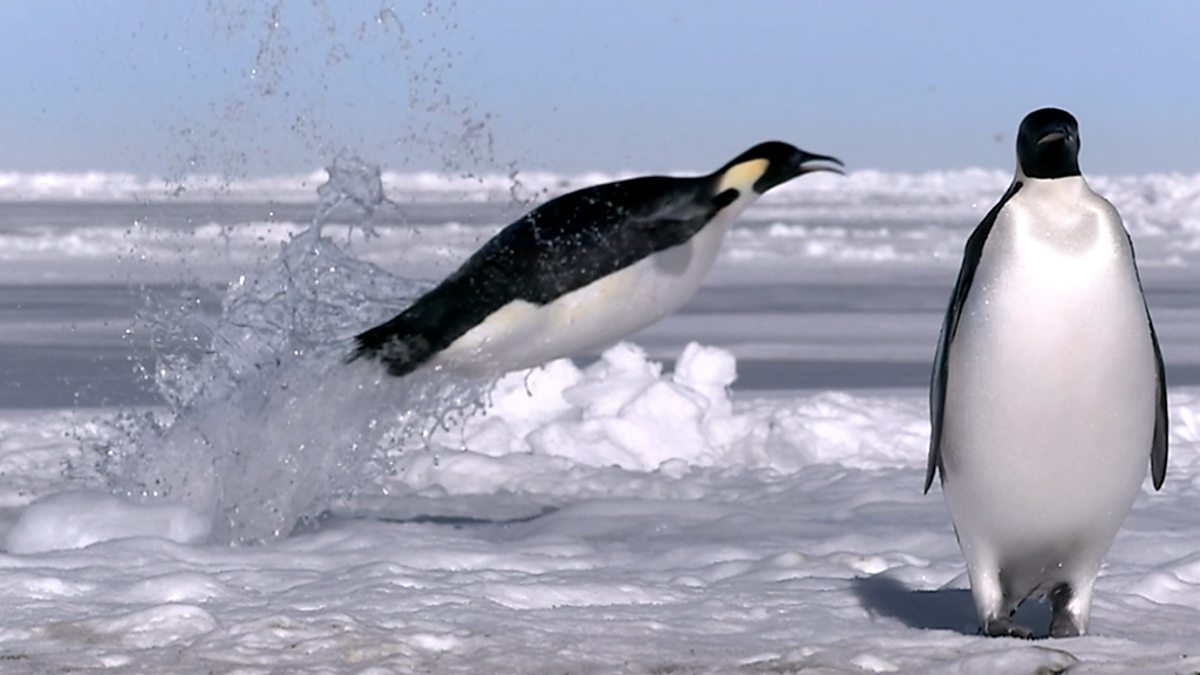By Scott
https://birdwatchinghq.com/penguin-facts/
Fact #14: “Some penguins are gay. Get over it.”
The following banner hangs over the penguin exhibit in the London Zoo during Gay Pride Week!
Most of the time, when animals form bonds, it is for mating & reproduction. However, penguins don’t always follow that trend.
First observed over a century ago, homosexual penguins are a somewhat common occurrence to witness. In fact, some homosexual penguin couples in zoos have successfully raised adopted chicks!
Fact #15: Penguins are the “National Animal” of…
Antarctica!
Wow! What an honor! Go penguins!
Not to diminish this award, but they don’t have much competition. The only other animals that live in Antarctica are a few whales and seals.
But hey, it’s still pretty awesome!
Fact #16: They come in all shapes & sizes!
The largest species of penguin is the Emperor Penguin. Both males & females stand up to 48 inches tall (122 cm)!
The smallest member of the penguin family is the rather uncreatively named Little Penguin. It stands only 13 inches tall (33 cm) & is seen most often in Australia & New Zealand. To put this in perspective, it’s not long before an Emperor chick is larger than a full-grown Little Penguin!
Interestingly, it seems that no one likes the name Little Penguin. Australians, unhappy with the silly name, have dubbed it the Fairy Penguin, due to its diminutive stature. In New Zealand, they like to call it the Little Blue Penguin, or simply the Blue Penguin.
Fact #17: Penguins are tasty for predators, but disgusting for humans.
As we mentioned earlier, penguins are efficient hunters that prey on large numbers of fish & krill.
However, many predators like to eat penguins.
While swimming in the ocean, penguins can be hunted by several animals, including Leopard Seals, Weddell Seals, Orcas, & sharks.
As they are waddling on land, penguins are targets for some birds, including the Skua & Australian Sea Eagle. And depending on where they live, certain penguin species & their eggs are vulnerable to rats, foxes, snakes, & cats.
I found it interesting that penguins probably taste disgusting to humans. No person has eaten one for a long time since they are a protected species, but there are a few accounts of early Antarctica explorers trying these birds.
Supposedly, the penguins were not very good. A Belgian seaman gave this description in 1898:
“If it’s possible to imagine a piece of beef, odiferous codfish, & a canvas-backed duck roasted together in a pot, with blood & cod-liver oil for sauce, the illustration would be complete.”
I also read that any animal that only eats fish as its primary food source is not particularly tasty to eat.
Fact #18: Their tuxedos are not just to look good.
The black and white coloring of a penguin reminds most people that they are always wearing a tuxedo.
But their formal coloration is actually an adaptation. It provides some pretty convincing camouflage to help avoid being eaten by a shark, seal, or whale!
Imagine you are a predator hunting a penguin in the ocean. If you are swimming above the penguins looking down, the black on their backs looks like the color of deep water. The penguins would be hard to see!
Now imagine you are that same predator, but you are swimming underneath the penguins & you look up. The white on their bellies blends in with the light coming from the surface!
Many other animals have adapted this same coloration, including orcas.
Fact #19: They have been around a LONG time.
The oldest penguin fossils ever discovered were from 60 million years ago! They were found in the shallow seas off New Zealand’s east coast & are officially called the Waimanu penguin.
During this period, New Zealand had already separated from Australia & Antarctica. It was a chunk of land that was much closer to the South Pole.
Researchers have indicated that its long bill & condensed wing bones show that it would be quite at home eating & swimming in today’s Antarctica!
This information indicates that an ancestor of the birds we see today survived the mass extinction of the dinosaurs!
Fact #20: They have better “hair” than 80’s rock bands!
Some species of penguins have some pretty impressive “hairstyles”!
First, check out the signature look of the Macaroni Penguin.
Even though Emperor Penguins get a lot of popularity, Macaroni Penguins are the most common species, with an estimated 18 million living on the planet.
However, the Southern Rockhopper Penguin goes it one better with their gel-spiked crewcut designed to impress the ladies. To attract mates, rockhopper penguins literally shake their heads around to make their yellow crests twirl, just like a headbanging rock star. (Seriously!)
I think the Fiordland Penguin pulls it off best with simple, sleek yellow hair running alongside their heads. I don’t think I’d want to run across one in a dark alley!
Fact #21: Not all penguins are black & white.
As you know, most penguins are a combination of black & white, typically having black backs with white fronts. But once in a while, you will find a bird that doesn’t look like your typical penguin.
It is incredibly rare, but it is possible to see a penguin that is all BLACK!
This Emperor Penguin has a mutation called melanism that causes all of its feathers to be entirely black!
Not to be outdone, it’s also possible to see a WHITE penguin!
This “blond” Chinstrap Penguin is leucistic. It’s not considered albino because there is a bit of patterning on its back. Regardless, it’s an incredibly rare sighting. Unfortunately, this mutation puts the penguin more at-risk to predators because it stands out among the crowd.
Fact #22: They can hold their breath for a LONG time.
Penguins primarily eat fish and krill in the ocean. In order to catch their prey, some penguin species have to dive REALLY deep, which means they have to hold their breath for a long time, up to 20 minutes for some!
Here are a few of the more impressive species:
Emperor Penguin: This species is the diving champion. The longest recorded dive lasted 22 minutes! They regularly dive between 100-200m (328-656 feet), but the deepest on record is 565m (1853 feet)!
King Penguin: They usually dive down to around 100m (328 feet), but the deepest was recorded at 500m (1640 feet). And they can hold their breath for 20 minutes!
Gentoo Penguin: They can hold their breath for up to 7 minutes & regularly dive as low as 200m (656 feet).
Fact #23: Forget the diamond ring. Penguins want a rock!
To help attract a mate, male Gentoo Penguins give pebbles to females.
She will then inspect the offer. If it’s accepted, then she takes the rock & adds it to her nest.
Adélie Penguins also exhibit the same behavior towards pebbles, & they treat these rocks as prized possessions. If a female Adélie accepts a stone, then it could mean they mate for life!
This obsession over rocks sounds very familiar. Where have I heard about another species that offers a diamond to their potential mates hoping they say “Yes” to being mates for life?
Fact #24: Penguins slide on their bellies.
Penguins are perfectly adapted to swimming in the ocean. But they have not evolved to walk gracefully on land, which is one reason their walk is called a “waddle.”
To help get around while not at sea, many penguin species will slide on their bellies over the ice & snow. Not only does it use less energy than walking, but most of the time, it provides faster transportation.
This act is known as “tobogganing.”
Fact #25: Penguins use physics to launch themselves.
Penguins can propel themselves from the sea onto land at breakneck speed.
There is some fascinating science behind how this happens!
After completing a long dive, penguins will head to the surface before exiting the water. While treading, the penguins trap tiny bubbles of air inside their dense feathers.
As they approach the surface to exit the water, the penguins can release these microbubbles at the perfect time. When this happens, the air creates a lubricating coat that reduces friction which helps the penguin torpedo out of the water!
Fact #26: They don’t make traditional bird nests.
Most of the places they live in are devoid of much plant life.
So, penguins make do with what they have! Many species create nests for their eggs out of rocks, pebbles, & loose feathers.
Emperor & King Penguins don’t make a nest at all! Once the egg is laid, it’s transferred to the top of their feet & is covered by a featherless fold of skin that keeps the egg warm!
Cute Christmas Critters:












No comments:
Post a Comment